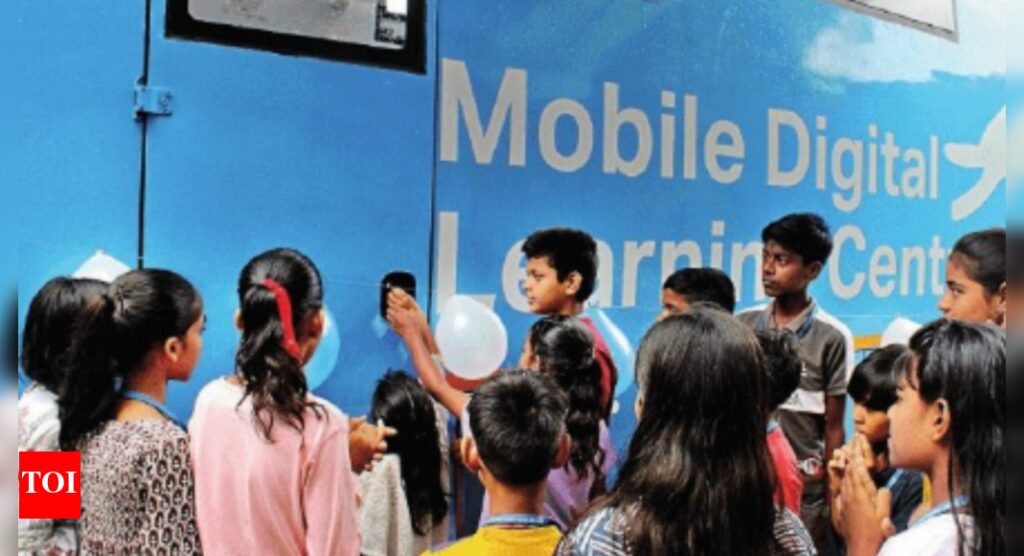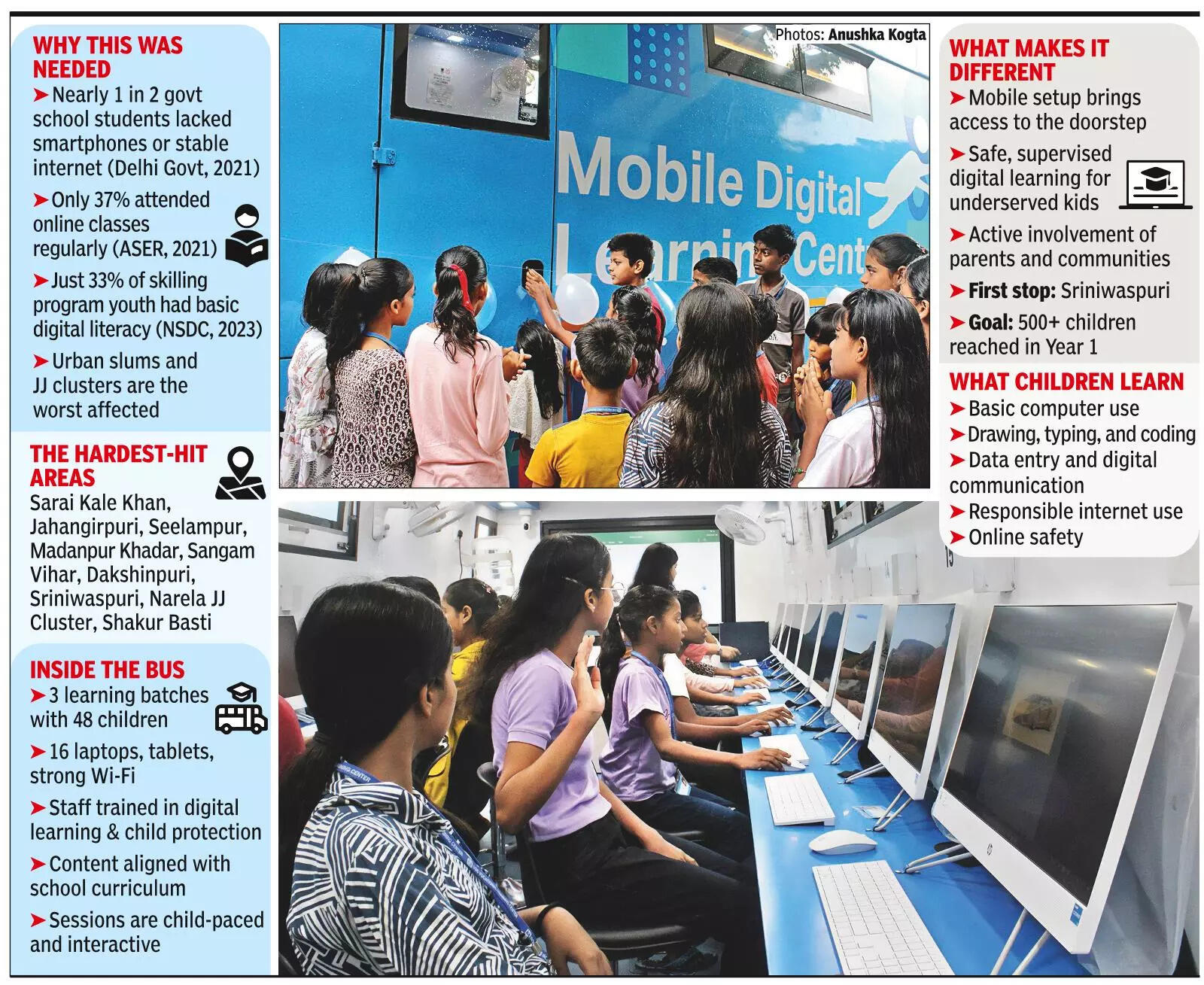Digital Learning Transforms Lives: Umeed on Wheels Brings Hope to Delhi’s Slum Children | Delhi News

NEW DELHI: When the rain started on Tuesday, some children in the Sriniwaspuri jhuggi ran out of their homes. In their soaking wet skirts and shirts, they all ran towards a blue bus. To them, this is the bus of hope.It is called Umeed on Wheels. The bus has no passenger seats, nor a driver at the wheel. What it has is 16 computers. The flickering blue light of the screens is what draws the children of the JJ cluster to the bus.The bus is like an alternative universe – a school classroom that is more fun, more accessible and digital. In it, the children are taught typing and sketching on MS Paint. Some have been trained in data entry. Umeed on Wheels is where the kids would rather be when it’s pouring down in sheets. Inside the bus, the air is of quiet interest.In a way, this bus is the answer to the Covid-induced deprivation that children of Delhi’s many jhuggis faced when classes went online. It was possible only for richer, more privileged children to study on digital screens to which they had exclusive access. For 13-year-old Tejaswi (name changed), this was never an option. “It was hard during Covid. I had to share one phone with two siblings. My father, who is a driver, couldn’t always manage the recharges,” she said. “This is the first time I’m learning properly. I wish we had this back then.”The bus-turned-digital classroom was launched by SOS Children’s Villages India. It was flagged off on Tuesday after two months of trials in the neighbourhood. Now, 48 children arrive at its door in three staggered shifts.The reason why the NGO started this bus is related to a hard question it asked: how many children in Delhi are locked out of the digital world? The answer wasn’t encouraging. A Delhi govt survey in 2021 found that nearly 45% of govt school students had no access to smartphones or a reliable internet connection. The ASER 2021 urban survey showed that 60% children in the city had access to smartphones at home, and just 37% could attend online classes regularly. In 2023, a National Skill Development Corporation report showed that only one in three youths had enrolled in skill programs that had any kind of digital literacy component.

The gap isn’t just about lack of access to devices. It is also about where the kids live. “The divide isn’t evenly spread,” said Sumant Kar, CEO of SOS Children’s Villages India. “Urban slums and JJ clusters are the worst hit. These are places such as Sarai Kale Khan, Jahangirpuri, Seelampur, Madanpur Khadar, Sangam Vihar, Dakshinpuri, Narela, and Sriniwaspuri. That’s why we started here,” he said.The bus, he said, is a low-barrier, high-impact solution. It takes digital education to the heart of underserved communities, does not need long commutes, nor waitlists. Just a run down the lane, even if it rains.Inside the bus are trained educators who focus on digital skills, online safety, and basic life skills such as communication and confidence-building. The curriculum is age-appropriate, with interactive content, e-books and lessons aligned to what the children are already learning in school.Twelve-year-old Uttam (name changed) said he found the bus-school more helpful than his real school. “I don’t understand a lot there. There’s not enough time, and sometimes the teacher is not even there,” he said. “Here, ma’am explains slowly. I will learn more.”This bus will later roll into other localities, much like a travelling circus, but of digital learning. The NGO plans to deploy more buses. In its first year, it hopes to reach at least 500 children.For Tejaswi and Uttam, it’s about finally having a shot at digital learning, one click at a time, sitting in a bus.







